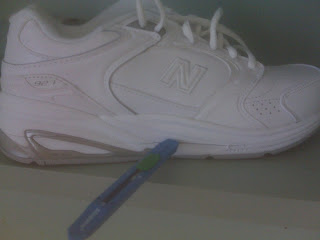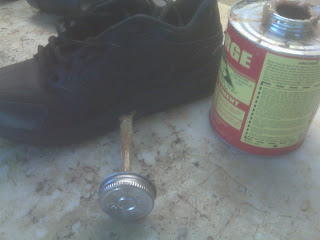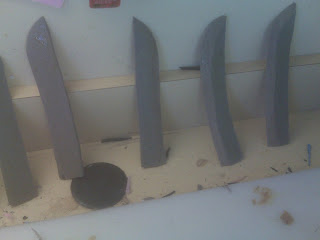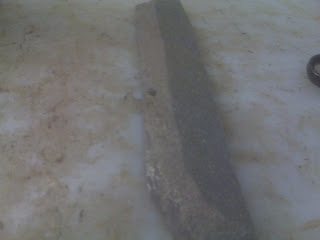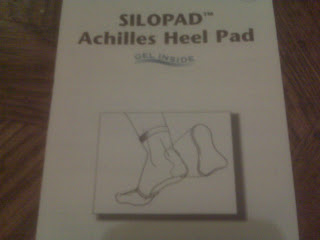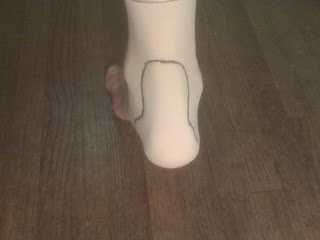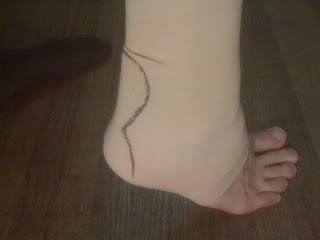B.R.I.S.S. Principle for Tendinitis Treatment
Having experienced my first writer’s block since starting this blog, and risking great personal sacrifice, my wife Patty and I went off to Italy for inspiration (on 5/18 to 5/31/10). The following posts were written in beautiful places along the Italian Riviera, with this one from San Remo. The photo above shows the view from our hotel room as we ate breakfast. What sacrifice I make, and will continue to make occasionally, for my readers.
What does B.R.I.S.S. stand for?
• B---Biomechanical Changes
• R---Rest or Activity Modification
• I----Ice or Anti-Inflammatory Measures
• S---Stretching or Flexibility
• S---Strength Training
Treatment of tendinitis (also called strains) should be done as soon as symptoms develop. The BRISS principle helps doctors/therapists/athletes stay focused on needs to be accomplished. Common tendinitis conditions treated by a podiatrist include Achilles tendinitis, posterior tibial tendinitis, various ankle tendinitis, patellar tendinitis, hamstring tendinitis or strain, piriformis strain or syndrome, and hip tendinitis.
B ---Biomechanical changes try to eliminate motions that cause or, at least, aggravate the problem. Each problem treated may have 3 or more biomechanical changes necessary to heal the problem quickly. For example, common biomechanical changes necessary to treat Achilles tendinitis include attaining greater heel heights in shoe gear, avoiding negative heel positions (see the separate post on negative heel stretch) like getting off your seat in cycling, correcting rear foot pronation when the heel and ankle are misaligned walking or running, and avoiding full flexion of the ankle (like in a deep squat). Each problem treated has different sets of changes that may be needed. Usually changes are made over the course of time from most obvious to less obvious (less common cause), or from simplest change to more difficult change to accomplish.
R ---Rest is a four lettered word to many I treat, including myself. Like Behavior Modification is to Diet, Activity Modification is to Rest. Activity Modification for injuries sprang out of the Sports Medicine Movement. To successfully use Activity Modification, the concept of Good Pain/Bad Pain must be understood by the clinician and patient (see separate post on this topic). Rest implies weakness, tightness, and basic loss of function. Activity Modification programs allow alternative exercises (biking when you can not run), or changes in activities (avoiding hills for a runner for example).
Golden Rule of Foot: If you can not run 5 miles, see if you can run 1 mile, or even 1 minute. There is a lot to be gained in running less than your normal amount, as long as you stay pain free, then not running at all. It can be part of a multi-factorial alternative Activity Modification program (say that backwards three times). It will allow you to get back to your normal running program faster than straight rest. Activity Modification programs produce less weakness, less tightness, less loss of function, and faster returns to full activity. It is definitely on the winning team!!
I ---Ice is the universal word for anti-inflammation. I have covered this thoroughly in 2 posts (Ice and Secrets of Contrast Bathing). 2 Golden Rules of Foot summarize this topic well:
• Heat before activity, Ice after activity.
• If swollen, soak whenever possible.
In treating tendinitis, a daily program done 2 or 3 times of Stretch, Strengthen, Stretch, Ice (SSSI) should be done. Stretch initially to gently warm up the injured tendon, strengthen the tendon by the prescribed program from doctor or therapist (but not through pain), stretch again to relax the tendon, and then ice to minimize any irritation/aggravation produced. This SSSI is the hallmark of most home tendinitis treatments.
S ---I put Stretching first over strengthening work because stretching is normally done first in the treatment of tendinitis. Golden Rule of Foot: Find a stretch that makes the muscle/tendon feel better and you are halfway home. Please see the post on the Generalizations of Stretching. Stretching is done for many reasons. Stretching should never be done through sharp pain, and you should never feel worse after stretching. Stretching is used to warm up a muscle/tendon before activity, to relax/cool down a tendon after activity (the most important time to stretch), and to gain flexibility when you are tight to begin with. There will be a separate post dealing with over-flexible tendons.
The typical stretching program for muscle strains/tendinitis conditions have the patients stretching 3x/day, pain free, whether they are exercising or not (yes, 20+ times/week). In cases of extreme tightness of the injured muscle/tendon, a minimum of 100 stretches may be necessary to begin to gain on flexibility, so why stretch once every other day!! (you will never get there). Golden Rule of Foot: If you feel the sore area when you stretch, you will get better a lot faster.
If I can get patients to feel that they are stretching the sore area, I know that they will heal faster than normal. If they can not feel the sore area while stretching, I need to find a possible variation of the stretch or measure to see if they are over-flexible (another problem).
S ---Strengthening or re-strengthening is vital to the treatment of tendinitis. It is last in the mnemonic BRISS, but the most important. One of the reasons it will always be last is that it is in the 2nd phase of rehabilitation called “The Re-Strengthening Phase”. Another reason it will always be last, it is the most often forgotten part of any rehabilitation program. Yes, that is correct!!
The 1st phase of rehabilitation is “The Immobilization Phase”. Immobilization has many forms/combinations including activity modification, braces, casts, orthotic devices, taping, and splints. The Immobilization Phase is when most anti-inflammatory measures are utilized. The Immobilization Phase is when most, if not all, of the pain disappears. The athlete and non-athlete feel great, or at least much much better. Why should they go through more rehab? Let’s Play Ball—or just get on with life!! But the injured tendon, now much weaker due to the period of immobilization, is in a very vulnerable position. It desperately needs more strength. It is very prone to re-injury if that strength is not regained.
We lose 1-3% of our strength daily in the injured tendon from the day an injury occurs. Within several months, all of the strength to do even normal activities is gone. Re-injury occurs often when the strength is never regained. Re-strengthening must be gradual and pain free. The art of re-strengthening is best done by physical therapists and personal trainers. I will have many posts on strengthening. Skilled sports medicine specialists try to strengthen injured areas almost the moment the injury happens. Patients can wake up from knee surgery with a muscle stimulator working the quads. I will leave you (and get back to sun-bathing on the Italian Riviera) with two more Golden Rules of Foot:
• The Immobilization Phase should be carefully merged with the Re-Strengthening Phase for quicker rehabilitation.
• Strengthening the injured area should begin as soon as possible, even right after surgery or if you are being placed in a cast.
